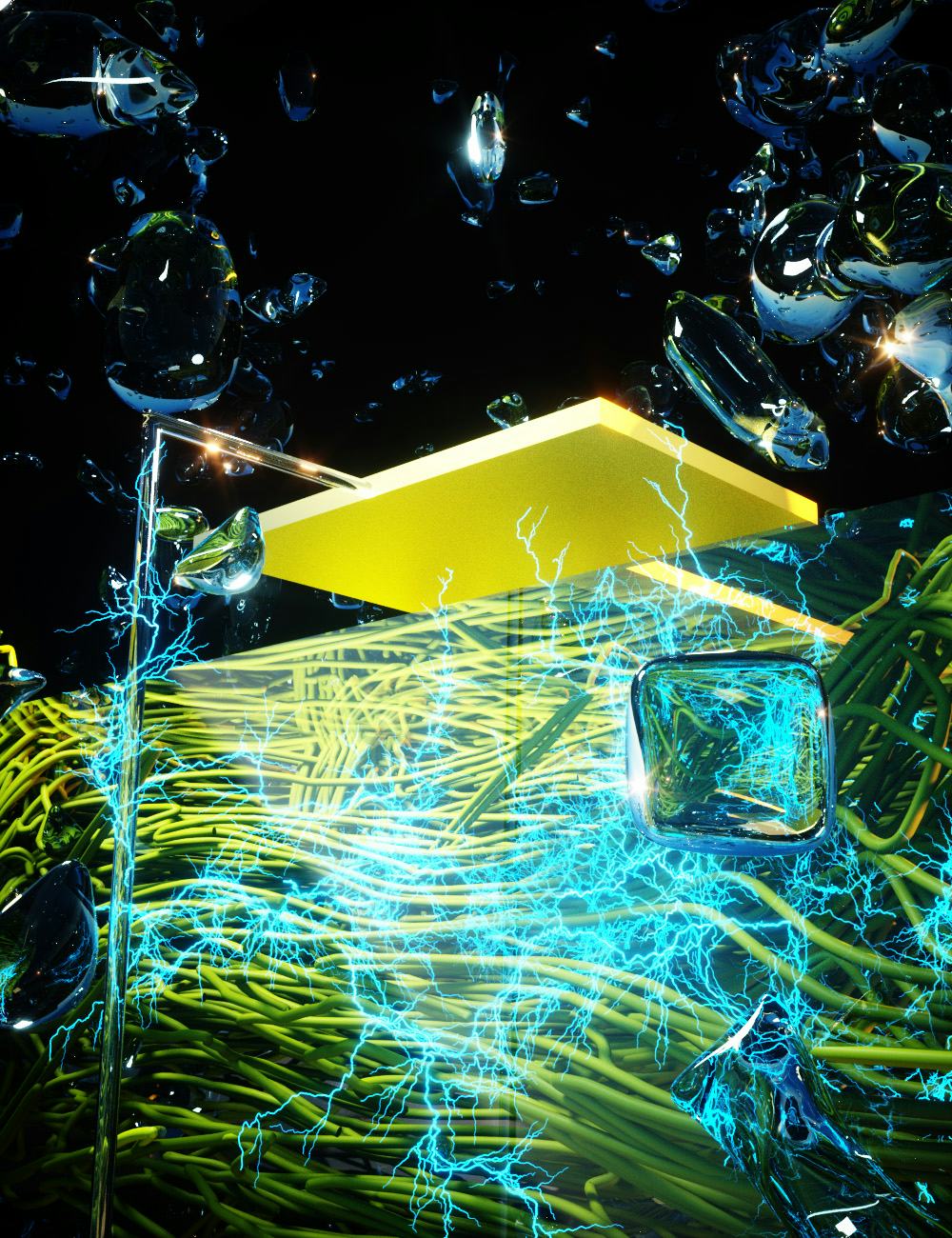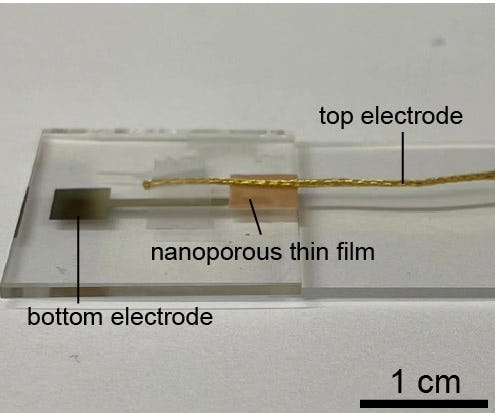
Taking a hint from the magician’s playbook, scientists have devised a way to pull electricity from thin air. A new study out today suggests a method in which any material can offer a steady supply of electricity from the humidity in the air.
All that’s required? A pair of electrodes and a special material engineered to have teeny tiny holes that are less than 100 nanometers in diameter. That’s less than a thousandth of the width of a human hair.
Here’s how it works: The itty-bitty holes allow water molecules to pass through and generate electricity from the buildup of charge carried by the water molecules, according to a new paper published in the journal Advanced Materials.

The process essentially mimics how clouds make the electricity that they release in lightning bolts.
Because humidity lingers in the air perpetually, this electricity harvester could run at any time of day regardless of weather conditions — unlike somewhat unreliable renewable energy technologies such as wind and solar.
“The technology may lead to truly ‘ubiquitous powering’ to electronics,” senior study author Jun Yao, an electrical engineer at the University of Massachusetts Amherst, tells Inverse.
Man-made “clouds”
The recent discovery relies on the fact that the air is chock-full of electricity: Clouds contain a build-up of electric charge. However, it’s tough to capture and use electricity from these bolts.
Instead of trying to wrangle power from nature, Yao and his colleagues realized they could recreate it. The researchers previously created a device that uses a bacteria-derived protein to spark electricity from moisture in the air. But they realized afterward that many materials can get the job done, as long as they’re made with tiny enough holes. According to the new study, this type of energy-harvesting device — which the study authors have dubbed "Air-gen", referring to the ability to pluck electricity from the air — can be made of “a broad range of inorganic, organic, and biological materials.”
“The initial discovery was really a serendipitous one,” says Yao, “so the current work really followed our initial intuition and lead to the discovery of the Air-gen effect working with literally all kinds of materials.”

Water molecules can travel around 100 nanometers in the air before bumping into each other. When water moves through a thin material that’s filled with these precisely sized holes, the charge tends to build up in the upper part of the material where they enter. Since fewer molecules reach the lower layer, this creates a charge imbalance that’s similar to the phenomenon in a cloud — essentially creating a battery that runs on humidity, which apparently isn’t just useful for making hair frizzy. Electrodes on both sides of the material then carry the electricity to whatever needs powering.
And since these materials are so thin, they can be stacked by the thousands and even generate multiple kilowatts of energy. In the future, Yao envisions everything from small-scale Air-gen devices that can power wearables to those that can offer enough juice for an entire household.
Before any of that can happen, though, Yao says his team needs to figure out how to collect electricity over a larger surface area and how best to stack the sheets vertically to increase the device’s power without taking up additional space. Still, he’s excited about the technology’s future potential. “My dream is that one day we can get clean electricity literally anywhere, anytime by using Air-gen technology,” he says.







